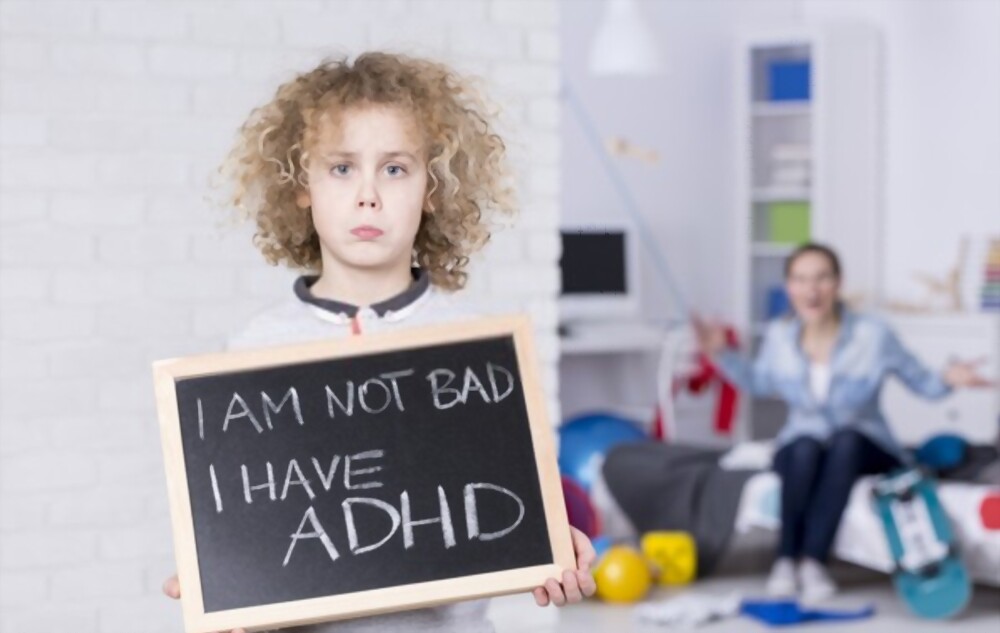Attention-deficit hyperactivity disorder (ADHD) is a neurodevelopmental disorder characterised by difficulty paying attention, impulsivity, and/or hyperactivity. The condition also affects the ability to focus, which can cause challenges with schooling and friendships and even cause challenges for a person in adulthood. People with ADHD may have trouble focusing on tasks, following instructions, and completing tasks. It affects millions of people around the world. It is usually treated with a combination of medication and therapy.
ADHD Signs and Symptoms
Restlessness and hyperactivity are common symptoms, particularly among children and young people. Children can go through phases where they may show these signs but for a short time, usually when hungry or tired. However, if a child has any of these symptoms regularly or consistently, it may be worth considering if they have ADHD.
The Two Types of ADHD
Alongside ADHD itself, there is also a similar condition called ADD (Attention Deficit Disorder), which generally has fewer hyperactivity symptoms, and the individual may be more inattentive. Many people with ADHD will have symptoms for both conditions, but individuals may fall into only one of the two categories.
ADHD is more focused on hyperactivity and impulsiveness. But there are other symptoms:
• Inability to stand or sit still in any situation, even if there are little or no stimuli to provoke them. There will often seem to be a lack of awareness from the individual about whether it is appropriate for them to move around.
• A frequent need to fidget, whether with their fingers/hands, piece of paper, clothing, or any other items they may have. The individual may not be aware that they are doing this, as it may have become a habit.
• Easily distracted and unable to focus on individual tasks. They may start to fidget, go on their phone or look out of the window at times when they are supposed to be focusing.
• Excessive need to talk.
• Difficulty sensing danger.
• Often interrupts other people’s conversations, unable to wait their turn or understand when their turn will occur.
Inattentiveness, however, is similar but slightly different. These symptoms will include:
• Being unable to focus for long periods and easily distracted by external stimuli. For example, a student at school may be able to focus for five minutes but no longer than that.
• A lack of attention to detail with school or office work, making needless mistakes with spelling, grammar, or factual information.
• A lack of ability to organise themselves or their duties, often forgetful.
• A reluctance to focus on tasks that they may not find stimulating or require a more gradual, careful time frame or approach. They will often switch activities and be slow to complete tasks.
• The individual may seem reluctant, indifferent, or uninterested when receiving instructions. However, this may be due to the individual drifting in and out of daydreams and only catching snippets of the instructions.
ADHD Causes and Risk Factors

What is the specific cause of ADHD is still unknown, but several factors are influential. Genetics are one factor. People who were born prematurely, have epilepsy or have brain injury are more at risk for ADHD.
How Is ADHD Diagnosed?
The first step will be to speak to either the child’s teacher or their GP. A doctor can’t provide a formal diagnosis for this condition, but they can refer the child to a specialist. Whether you speak to the teacher or a GP, you are likely to be asked a few questions related to the child’s symptoms, and in particular, the doctor will want to know what situations the symptoms arise in, as that will provide insight into the likelihood of an ADHD diagnosis.
The GP may suggest monitoring the symptoms for a few weeks to see if there are any changes in behaviour. You will likely be referred for a formal assessment if everything stays the same. The assessment will be carried out by a specialist, who may be a Psychiatrist, Learning Difficulties Specialist, Occupational Therapist or someone with a high level of expertise in ADHD.
The type of assessment can vary from a physical examination, where the aim will be to discover any other potential causes for the symptoms. Other forms of assessment can be for the assessor to request reports from significant people in your or your child’s life to gain insight into the overall behaviour.
Criteria for an ADHD Diagnosis
In addition to the main symptoms, there are added factors which the assessor must bear in mind to reach a diagnosis.
The assessor will need confirmation that the child was/has been displaying multiple traits of ADHD throughout their childhood and, if applicable, before reaching adolescence.
It’s also important to observe where the symptoms occur and whether they are consistent. For example, if the child always displays traits of ADHD around their family members, close friends, and often at school, then this would raise the likelihood of a diagnosis. The symptoms would usually need to be displayed in at least two scenarios to make a diagnosis.
If the symptoms interfere with schoolwork, the child’s ability to make friends, or it causes them difficulty with eating or getting to sleep, this will increase their likelihood of being diagnosed with ADHD.
Other conditions have overlapping symptoms, so it is important not to misdiagnose.
Diagnosing ADHD in Adults
ADHD is commonly known to last into adulthood. However, the symptoms will usually appear differently for adults. Symptoms of hyperactivity may be displayed as restlessness or cause constant fidgeting. Symptoms can still cause difficulties with friendships and socialising, individual behaviour or energy levels.
It’s a lot more challenging to diagnose the condition in adults. It’s vital to gain information about the adult’s performance at work, their social life, and even whether their symptoms affect driving (if applicable).
Treatment of ADHD
ADHD is a condition which can be treated and managed with medication. Therapy is also offered, and sometimes a combination of medication and therapy is desired.
My Child Has Been Diagnosed With ADHD, What Happens Now?
There are several ways to help a child who has recently been diagnosed with ADHD:
• Set a schedule each day. It is essential to discuss with them exactly what they’ll be doing each day, step by step, and create boundaries so that they know what behaviour is acceptable and what isn’t.
• Be positive and specific. Congratulate your child for completing their task on time and doing it to a high standard.
• Encourage good behaviour and show them what it is worth by rewarding them for completing chores, being polite, finishing their meal, or any other activity which they might have difficulty with due to their symptoms.
Behaviour Therapy, Including Training for Parents
Some educational activities and sessions can be offered to parents. Being offered these options will not reflect your parenting skills. They are simply designed to help you to manage your child’s condition. The educational sessions are usually in groups, allowing you to bond with people in similar positions.
Tips for Parents
Suppose you’re interested in encouraging your child to try therapy. In that case, CBT (Cognitive Behavioural Therapy) is a talking therapy that can encourage your child to think about their behaviour and how they can control or change it. CBT is more active than counselling or psychotherapy, so your child may find it more stimulating.
Another tip would be to consider which people need to know about your child’s symptoms and potential diagnosis. These people can include teachers, parents of your child’s friends, a principal of their school or even the staff in any shops you frequent during the school run.
It is also essential to note any side effects of your child’s medication. This will help you monitor how your child reacts to their medication and whether their symptoms are improving. This will also give you a chance to keep a record of which medications are adequate for the symptoms.
Children Under the Age of Six
Children who are younger than six years of age can still show symptoms of ADHD or ADD, and they can still be diagnosed. In some cases, it may be more sensible to monitor the symptoms for a while because, at such a young age, the symptoms could either be temporary or a sign of a different condition.
Treatment Recommendations For ADHD
Many treatment options are available for both adults and children with ADHD. These treatments can vary from talking therapies such as counselling, and CBT (Cognitive Behavioural Therapy), to medication or a diet change.
If reviewing your diet is beneficial, a doctor may refer you to a dietitian to follow any changes that can be made to what you or your child eat in case certain foods trigger symptoms. Supplements are also available to complement the nutrition in your diet.
Managing Symptoms: Staying Healthy
There are ways to manage the symptoms of a child with hyperactivity disorder.
You will gain knowledge and insight into what stimuli can trigger symptoms as time passes, and you will gain coping methods and ways to manage the situation.
You can practice monitoring the child’s behaviour and when something may trigger increased symptoms.
Another option would be to encourage socialising via brief social encounters. This could include arranging a meeting with the child’s friend, but only for a short time.
It’s also helpful to ensure that your child gets plenty of exercise.
Conclusion
ADHD is a condition which can cause symptoms such as hyperactivity, impulsiveness and inattentiveness in children, teenagers, and adults. It usually begins in childhood but can also develop in adulthood, although symptoms for adults are usually displayed slightly differently from how they’d appear for children. There are medications available to manage the condition, as well as various therapies and lifestyle changes that can be made.












